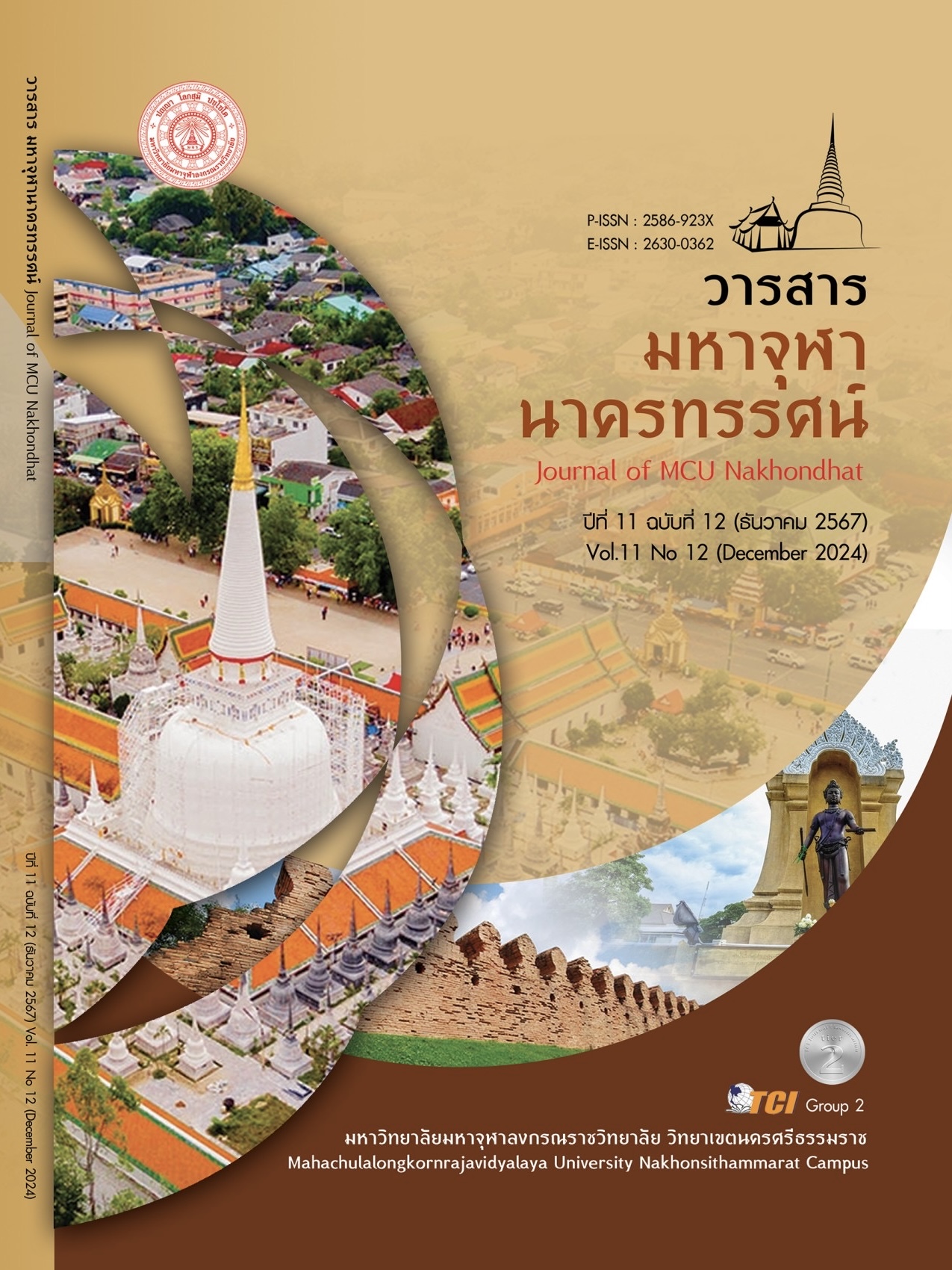LESSONS LEARNED ON AGE-FRIENDLY COMMUNITIES IN SUKHOTHAI PROVINCE
Main Article Content
Abstract
This research article aimed to extract lessons learned from age-friendly communities in Sukhothai Province through a qualitative study. The key informants included stakeholders from three networks implementing age-friendly community initiatives in Sukhothai Province, with 5 participants per group, totaling 15 participants. The participants were selected using maximum variation sampling. The research instruments consisted of focus group discussion guidelines, an audio recorder, a camera or smartphone, and a field notebook. Data were collected through focus group discussions, analyzed using content analysis, and validated through triangulation. The findings revealed that the lessons learned from age-friendly communities in Sukhothai Province comprise 2 main aspects: 1) The model of age-friendly communities consists of 11 key components, including outdoor spaces and buildings, transportation, housing, social participation, respect and social inclusion, civic participation and employment, communication and information, community support and health services, psychological support, integrated multi-sector collaboration, and innovations for elderly care; and 2) The key success factors include support from government agencies and local administrative organizations, active participation from the community and volunteer networks, resource cost management for sustainability, leadership that prioritizes development, continuous improvement, the development of innovations tailored to the elderly, and strong partnerships for sustainable development. Therefore, relevant agencies should adopt this model and these success factors to develop age-friendly communities that address the needs of the elderly in alignment with each area's specific context.
Article Details

This work is licensed under a Creative Commons Attribution-NonCommercial-NoDerivatives 4.0 International License.
References
กรมกิจการผู้สูงอายุ. (2566). สถานการณ์ผู้สูงอายุไทย พ.ศ. 2565. กรุงเทพมหานคร: อมรินทร์ คอร์เปอเรชั่นส์.
จิราพร วรวงศ์ และคณะ. (2563). การพัฒนาชุมชนเป็นมิตรกับผู้สูงอายุ: โรงเรียนผู้สูงอายุตำบลนาพู่ อำเภอเพ็ญ อุดรธานี. วารสารพยาบาลกระทรวงสาธารณสุข, 30(2), 150-163.
ณัฐติกาญจน์ สุวรรณเทพ และคณะ. (2567). การพัฒนารูปแบบชุมชนที่เป็นมิตรกับผู้สูงอายุ เขตสุขภาพที่ 4. วารสารศูนย์อนามัยที่ 10 อุบลราชธานี, 12(2), 36-52.
ทัศนีย์ ปัทมสนธิ์ และคณะ. (2564). ความต้องการและความคาดหวังของชุมชนเกี่ยวกับเมืองที่เป็นมิตรต่อผู้สูงอายุ ในเขตเทศบาลเมืองอรัญญิก จังหวัดพิษณุโลก. Journal of Roi Kaensarn Academi, 6(7), 204-218.
นาฏสินี ชัยแก้ว และมยุรี บุญทัด. (2567). การพัฒนารูปแบบเมืองที่เป็นมิตรต่อผู้สูงอายุในเขตสุขภาพที่ 3. วารสารศูนย์อนามัยที่ 9, 18(1), 366-379.
เบญจมาศ เมืองเกษม. (2564). รูปแบบเมืองที่เป็นมิตรต่อผู้สูงอายุในเขตตำบลบ้านดู่ อำเภอเมือง จังหวัดเชียงราย. วารสาร มจร มนุษยศาสตร์ปริทรรศน์, 7(1), 239-254.
มูลนิธิสถาบันวิจัยและพัฒนาผู้สูงอายุไทย. (2565). สถานการณ์ผู้สูงอายุไทย พ.ศ. 2564. นครปฐม: สถาบันวิจัยประชากรและสังคม มหาวิทยาลัยมหิดล.
วรายุส ปานนิมิตจิตสมาน และคณะ. (2566). การจัดการเมืองที่เป็นมิตรกับผู้สูงอายุในเขตกรุงเทพมหานคร: การมีส่วนร่วม คือ หัวใจ เส้นชัย คือ ผู้สูงอายุ. วารสารดุษฎีบัณฑิตทางสังคมศาสตร์, 13(1), 104-116.
สำนักงานสาธารณสุขจังหวัดสุโขทัย. (2566). รายงานประจำปีงบประมาณ พ.ศ. 2566. สุโขทัย: สำนักงานสาธารณสุขจังหวัดสุโขทัย.
สำนักอนามัยผู้สูงอายุ. (2566). คู่มือการดำเนินงานชุมชนที่เป็นมิตรกับผู้สูงอายุและผู้พิการ (Age-friendly communities) ประจำปีงบประมาณ พ.ศ. 2567. นนทบุรี: กรมอนามัย กระทรวงสาธารณสุข.
Miles, M. B. & Huberman, A. M. (1994). Qualitative data analysis: An expanded sourcebook. (2nd ed.). California: Thousand Oaks, California: Sage.
World Health Organization. (2007). Global age-friendly cities: A guide. Switzerland: World Health Organization.


